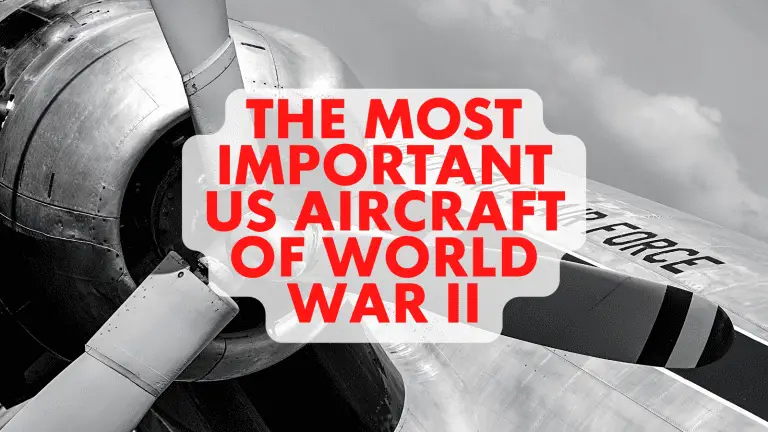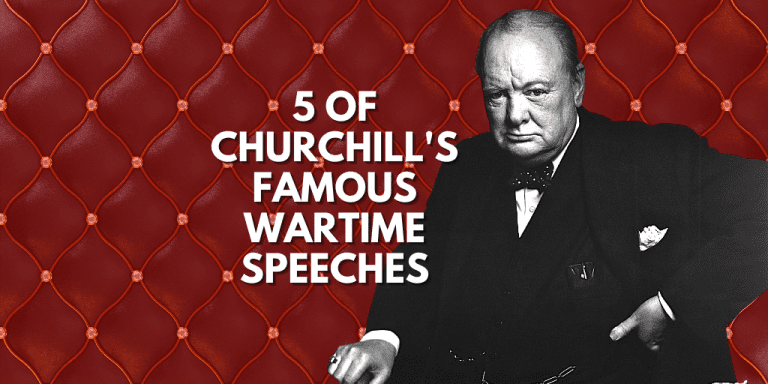[et_pb_section fb_built=”1″ _builder_version=”4.15.0″ _module_preset=”default” global_colors_info=”{}”][et_pb_row _builder_version=”4.15.0″ _module_preset=”default” global_colors_info=”{}”][et_pb_column type=”4_4″ _builder_version=”4.15.0″ _module_preset=”default” global_colors_info=”{}”][et_pb_text _builder_version=”4.15.0″ _module_preset=”default” global_colors_info=”{}”]
On December 7, 1941, the Japanese sent hundreds of fighter planes to bomb the US Pearl Habor naval base, which damaged 20 boats and 300 airplanes. In addition to the successful destruction of these target vessels, 2,400 Americans lost their lives in the attack. Another 1000 were injured. Most newspapers recounted the story of the USS Arizona, one of the ships lost in the attack. One of the 1,800 lb bombs landed near the ship’s bow, breaking through the deck. Witnesses at Pearl Harbor remembered the explosion and the screams of the 1,000 men trapped inside as the boat sank.
These stories whipped the public into a frenzy. President Franklin D. Roosevelt asked Congress to declare war the very following day. The attack on Pearl Harbor is often credited as the tipping point for the United States entering WWII. However, in his statement to Congress the day after the attack, President Franklin D. Roosevelt only sought a declaration of war against Japan, not Germany.
[/et_pb_text][/et_pb_column][/et_pb_row][et_pb_row _builder_version=”4.15.0″ _module_preset=”default” global_colors_info=”{}”][et_pb_column type=”4_4″ _builder_version=”4.15.0″ _module_preset=”default” global_colors_info=”{}”][et_pb_text _builder_version=”4.15.0″ _module_preset=”default” global_colors_info=”{}”]
Tensions between the United States and Japan Pre WW2
[/et_pb_text][/et_pb_column][/et_pb_row][et_pb_row _builder_version=”4.15.0″ _module_preset=”default” column_structure=”1_5,3_5,1_5″][et_pb_column _builder_version=”4.15.0″ _module_preset=”default” type=”1_5″][/et_pb_column][et_pb_column _builder_version=”4.15.0″ _module_preset=”default” type=”3_5″][et_pb_image src=”http://historywithhenry.com/wp-content/uploads/2022/03/1-11.png” _builder_version=”4.15.0″ _module_preset=”default” alt=”Why did Japan Bomb Pearl Harbor?” title_text=”1″ hover_enabled=”0″ sticky_enabled=”0″][/et_pb_image][/et_pb_column][et_pb_column _builder_version=”4.15.0″ _module_preset=”default” type=”1_5″][/et_pb_column][/et_pb_row][et_pb_row _builder_version=”4.15.0″ _module_preset=”default” global_colors_info=”{}”][et_pb_column type=”4_4″ _builder_version=”4.15.0″ _module_preset=”default” global_colors_info=”{}”][et_pb_text _builder_version=”4.15.0″ _module_preset=”default” global_colors_info=”{}”]
Relations between the United States and Japan had been in decline for several years. Japan had declared war on China in a bid to remain a world power in 1937, and the United States was supporting China materially and financially. The Japanese committed atrocities such as The Rape of Nanking in their pursuit of resources – which the United States gravely denounced with economic sanctions against Japan. By the time the bombing of Pearl Harbor occurred, the United States had cut all economic ties with Japan. Some saw this escalation as the natural consequence of several decades of political jockeying in Eastern Asia.
[/et_pb_text][/et_pb_column][/et_pb_row][et_pb_row _builder_version=”4.15.0″ _module_preset=”default” global_colors_info=”{}”][et_pb_column type=”4_4″ _builder_version=”4.15.0″ _module_preset=”default” global_colors_info=”{}”][et_pb_text _builder_version=”4.15.0″ _module_preset=”default” global_colors_info=”{}”]
The United States’ reluctance to join the Second World War
[/et_pb_text][/et_pb_column][/et_pb_row][et_pb_row _builder_version=”4.15.0″ _module_preset=”default” column_structure=”1_5,3_5,1_5″][et_pb_column _builder_version=”4.15.0″ _module_preset=”default” type=”1_5″][/et_pb_column][et_pb_column _builder_version=”4.15.0″ _module_preset=”default” type=”3_5″][et_pb_image src=”http://historywithhenry.com/wp-content/uploads/2022/03/2-11.png” _builder_version=”4.15.0″ _module_preset=”default” alt=”Why did Japan Bomb Pearl Harbor?” title_text=”2″ hover_enabled=”0″ sticky_enabled=”0″][/et_pb_image][/et_pb_column][et_pb_column _builder_version=”4.15.0″ _module_preset=”default” type=”1_5″][/et_pb_column][/et_pb_row][et_pb_row _builder_version=”4.15.0″ _module_preset=”default” global_colors_info=”{}”][et_pb_column type=”4_4″ _builder_version=”4.15.0″ _module_preset=”default” global_colors_info=”{}”][et_pb_text _builder_version=”4.15.0″ _module_preset=”default” global_colors_info=”{}”]
Despite the
United States‘ entrance into the Pacific War, they did not at first get involved in the European conflict. They hoped their declaration of war on Japan would go unanswered by Italy and Germany. The Tripartite Pact stated that while other Axis powers were bound to come to Japan’s aid if it was attacked, there was no need if it was the aggressor. There was no doubt that Japan had been the aggressor at Pearl Habor, and thus Germany and the United States were not automatically at odds.
Germany also had good reason not to declare war on the United States at the time – the war front was at a stalemate, and the addition of another world power to the conflict would be risky.
However, once The United States declared war on Japan (December 8, 1941), Germany and Italy responded with war declarations of their own a mere three days later. At this point, negotiations between President Franklin D. Roosevelt and Prime Minister Winston Churchill concluded, and the United States agreed to take on a “Europe first” strategy to end the war on the Western Front before turning to the Pacific.
[/et_pb_text][/et_pb_column][/et_pb_row][et_pb_row _builder_version=”4.15.0″ _module_preset=”default” global_colors_info=”{}”][et_pb_column type=”4_4″ _builder_version=”4.15.0″ _module_preset=”default” global_colors_info=”{}”][et_pb_text _builder_version=”4.15.0″ _module_preset=”default” global_colors_info=”{}”]
The Japanese saw attack as their only option to defend their position as a world power
[/et_pb_text][/et_pb_column][/et_pb_row][et_pb_row _builder_version=”4.15.0″ _module_preset=”default” global_colors_info=”{}”][et_pb_column type=”4_4″ _builder_version=”4.15.0″ _module_preset=”default” global_colors_info=”{}”][et_pb_text _builder_version=”4.15.0″ _module_preset=”default” global_colors_info=”{}”]
Japan had been feeling threatened by western colonialism in Eastern Asia for some time. The United Kingdom, the Netherlands, and the United States all had power bases in the area and took advantage of resource-rich areas. With a long history of naval and cultural power in the region, Japan was strategizing about how to remain relevant in this new landscape. When it became clear that diplomacy would only get them so far, the Japanese increasingly began to see war as the only option to defend their position as a world power.
For this reason, they attacked China in 1931 and annexed the Northern province of Manchuria with a puppet government. Tensions escalated with a more widespread declaration of war against China in 1937. Japan had plans to take over the entirety of Indonesia, China, and parts of Southeast Asia.
However, to accomplish this, they needed naval superiority in the Pacific. Colonial outposts in Eastern Asia were vacated mainly by the European powers at this point due to tensions back home. However, the United States still had a significant presence nearby in Hawaii. Bombing Pearl Harbor was meant to be a pre-emptive attack to remove the United States from the Pacific theatre in preparation for widespread Japanese invasions.
[/et_pb_text][/et_pb_column][/et_pb_row][et_pb_row _builder_version=”4.15.0″ _module_preset=”default” global_colors_info=”{}”][et_pb_column type=”4_4″ _builder_version=”4.15.0″ _module_preset=”default” global_colors_info=”{}”][et_pb_text _builder_version=”4.15.0″ _module_preset=”default” global_colors_info=”{}”]
A surprise attack was essential for success
[/et_pb_text][/et_pb_column][/et_pb_row][et_pb_row _builder_version=”4.15.0″ _module_preset=”default” global_colors_info=”{}”][et_pb_column type=”4_4″ _builder_version=”4.15.0″ _module_preset=”default” global_colors_info=”{}”][et_pb_text _builder_version=”4.15.0″ _module_preset=”default” global_colors_info=”{}”]
The Japanese had been readying an attack plan to take control of the Pacific since early 1940, named “The Southern Operation.” This operation included bombing UK and US naval bases in Singapore, the Philippines, and Pearl Harbor, designed to cripple all remaining units in range to stop Japan from conquering The Dutch East Indies. The operation was launched in November of 1941 while Japanese officials continued to negotiate with the United States.
The aircraft carriers used strict radio silence, which carried 408 aircraft toward Pearl Harbor to avoid detection. This mission took just under two weeks to reach its destination. The Japanese readied a message to declare war at the last possible moment (effectively avoiding a breach in international law while still maintaining the element of surprise). Surprise was crucial to the success of the plan. The goal of the attack was to remove as many ships and aircraft from commission as possible in one move. An early warning of the forthcoming attack might have caused the United States to move some of its ships and aircraft to other locations.
Indeed, this did happen to some extent. High ranking officials had ordered the movement of 400 aircraft to an inland airfield as a precaution, and through pure chance, the four aircraft carriers and a fleet of destroyers meant to be at Pearl Harbor were delayed. This, combined with the Japanese failing to target repair stations and oil stockpiles, dulled the success of the attack. Most of the damaged ships and aircraft were repaired and quickly returned to service.
[/et_pb_text][/et_pb_column][/et_pb_row][et_pb_row _builder_version=”4.15.0″ _module_preset=”default” global_colors_info=”{}”][et_pb_column type=”4_4″ _builder_version=”4.15.0″ _module_preset=”default” global_colors_info=”{}”][et_pb_text _builder_version=”4.15.0″ _module_preset=”default” global_colors_info=”{}”]
The Aftermath
[/et_pb_text][/et_pb_column][/et_pb_row][et_pb_row _builder_version=”4.15.0″ _module_preset=”default” column_structure=”1_5,3_5,1_5″][et_pb_column _builder_version=”4.15.0″ _module_preset=”default” type=”1_5″][/et_pb_column][et_pb_column _builder_version=”4.15.0″ _module_preset=”default” type=”3_5″][et_pb_image src=”http://historywithhenry.com/wp-content/uploads/2022/03/3-11.png” _builder_version=”4.15.0″ _module_preset=”default” alt=”Why did Japan Bomb Pearl Harbor?” title_text=”3″ hover_enabled=”0″ sticky_enabled=”0″][/et_pb_image][/et_pb_column][et_pb_column _builder_version=”4.15.0″ _module_preset=”default” type=”1_5″][/et_pb_column][/et_pb_row][et_pb_row _builder_version=”4.15.0″ _module_preset=”default” global_colors_info=”{}”][et_pb_column type=”4_4″ _builder_version=”4.15.0″ _module_preset=”default” global_colors_info=”{}”][et_pb_text _builder_version=”4.15.0″ _module_preset=”default” global_colors_info=”{}”]
The lasting effect of the Pearl Harbor attack ended up being the considerable number of casualties sustained, which served to anger the United States without sufficiently hampering its ability to respond. In a matter of days, the course of the war was changed. Germany and Japan had been slowly depleting the Allies in a battle of attrition, a slow creep toward victory. Despite strategic ingenuity and steadfastness from the remaining allies, chiefly the USSR and UK, they were beginning to struggle with resources and morale. However, with the entrance of the heavily industrialized, resource-heavy United States into the conflict, reinforcements arrived to shore up war-weary areas of the fronts. After the fresh supplies and soldiers arrived, the war began to turn, and the Axis forces were pushed back.
[/et_pb_text][/et_pb_column][/et_pb_row][/et_pb_section]







